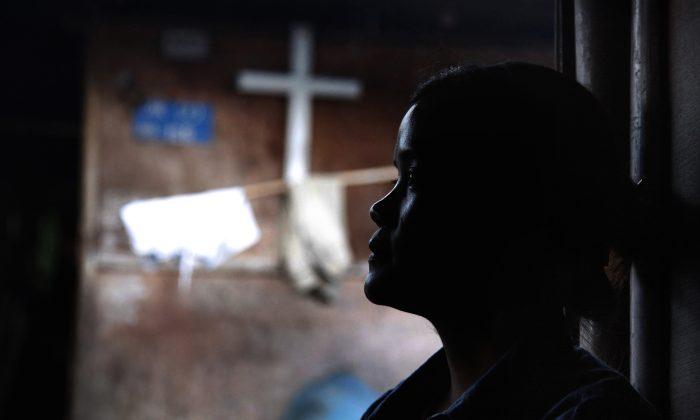On September 3, Chinese President Xi Jinping declared at the opening ceremony of the Forum on China–Africa Cooperation Beijing Summit in 2018 that China is willing to provide to African countries $60 billion through various channels including government assistance, financial institutions, and corporate investment. Some of the countries in this list are among Africa’s least developed, or the most heavily in debt, and now Beijing has exempted them from making loan payments that were originally due at the end of this year.
Xi’s statements sparked negative responses in Chinese online circles, with many people accusing the leader of “wantonly showering coins.”
Behind this overly generous largess, however, lies Beijing’s calculus for a shift in its international economic strategy.
China Cannot Face the US Head-on
A careful examination of the specifications and time points of Xi Jinping’s proposed $60 billion investment suggest a twofold purpose. One is to seize opportunity during a period of adjustment in the American economic strategy. The second is that the trade war has put China in a very difficult position. Rather than conceding to U.S. demands, the Chinese regime opened a second front in Africa.Let us first examine why the investment or aid package is valued at $60 billion. On Aug. 31, the Wall Street Journal published an article titled “To Counter China, U.S. Looks to Invest Billions More Overseas,” which the U.S. government’s decision to merge several little-known government agencies into a new agency—the U.S. International Development Finance Corporation (USIDFC), which is authorized to make $60 billion in investments. Its parent body, the Overseas Private Investment Corporation (OPIC), was established in 1971 by President Nixon to help U.S. companies invest in the development of emerging economies with a mind to realize Washington’s foreign policy goals.
Following its establishment, the USIDFC took charge of several projects managed by the U.S. Agency for International Development, among which the largest is the Development Credit Authority. Having these rights helps U.S. companies compete evenly with China in terms of financing options for major infrastructure and development projects in third-party countries.
The contest between China and the United States in terms of power construction in Africa began as early as during the Obama era. In the final year of Obama’s term, Washington launched the “Electrify Africa Act of 2016.” Additionally, the African Growth and Opportunity Act, first introduced in 2000, was vastly altered to comply with World Trade Organization regulations, its period of effect was extended until September 2025. These bills became the two pillars of the United States’ new Africa strategy.
Not to be outdone, in 2017 China announced that it would, at “Chinese speed,” build Africa’s largest hydroelectric power plant, the Grand Ethiopian Renaissance Dam.
After Trump took office, he originally planned to make major adjustments to his Africa policy. Citing the dilapidation of U.S. infrastructure, he argued against large non-military aid commitments for other countries. Believing U.S. infrastructure to be dilapidated, he found large amounts of non-military aid unnecessary. He even proposed that the “food for peace” project that mainly targets Africa be removed from this year’s budget entirely. Later, amidst the Sino–American trade war and as his understanding of China gradually deepened, Trump came to realize that Africa was the lynchpin of the “Belt and Road” initiative. He thus supported the bill proposed by the House of Representatives to merge several functionally similar institutions into the USIDFC and expand its funding ceiling to give the institution the right to provide up to $60 billion in development financing. This bill has successfully passed in the House of Representatives and now only needs to pass the Senate vote. Nowadays, the attitude on China in the U.S. legislature is relatively united, so the bill should go through without much resistance.
China’s $60 billion Africa investment is in direct response to the $60 billion figure floated by the USIDFC, and Beijing apparently sees no need to hide this point. Shortly after Xi announced the investment, China’s overseas state mouthpieces began heavily reporting on how due to the rising global influence of China’s “Belt and Road” project, the United States would soon finalize a law to merge several financial institutions.
Why Africa?
The Sino-US trade war is currently progressing at moderate intensity. Nov. 6 is the day of the U.S. midterm election. As Trump continues to deal with resistance from the Democratic Party and the mainstream media, the Chinese regime is banking its hopes on the Republican Party losing control of Congress, thus giving power to Democrats who might loosen up on trade.At a Beijing seminar on Aug. 28, Wei Jianguo, former vice minister of commerce of China and current vice president of the China Center for International Economic Exchange, explained the Chinese regime’s intentions: in the next five years, China plans to increase the value of its exports to Africa to $500 billion annually, and thus use Africa to replace the United States as China’s largest export market. In this way, even if the United States puts tariffs on all $500 billion of goods that China exports to it, China would gain the final victory as its own imports of U.S. goods are worth only $150 billion. Wei did, however, concede that Chinese exports to Africa are not wholly comparable to that of exporting to the United States.
In addition to the export substitution role, Beijing also bears in mind the fact that China and Africa have cooperated on economics and trade for many years, whether through loans or trade, and many African countries have already deposited the yuan into their own financial systems. With the yuan weakening against the dollar, and facing a difficult situation where total foreign exchange reserves are being maintained at 3 trillion yuan, promoting the internationalization of the renminbi can help alleviate pressure. More than 60 countries and regions—including 14 in Africa—have included the yuan in their foreign exchange reserves since its 2016 recognition by the International Monetary Fund as one of the five major reserve currencies. Some countries, such as Nigeria, are also willing to use the yuan as a settlement currency.
Can China Win in Africa?
Owing to its prestige and momentum, I believe that China would prevail over the United States in Africa. In China’s African investments, the government is the financial backer, so the investments are being made regardless of their profitability. The absence of a dividing line between aid and investment is not only a unique characteristic, but also a strength. Included in Xi Jinping’s $60 billion commitment is $15 billion in grants, zero-interest loans and concessional loans; $20 billion in credit lines; $10 billion in a special fund for China-Africa development financing; and a $5 billion special fund for financing Chinese imports from Africa. The Chinese regime has long practiced this sort of non-distinction between aid and investment. For example, in 2013, a Chinese representative said at the African Investment Summit that before 2025, China will provide Africa a total of $1 trillion dollars’ worth of loans, including direct investment, soft loans, various types of business loans, aid, and the like.The United States cannot do things this way, as it defines aid and investment very clearly. Efforts to market aid as investment will inevitably hit resistance, so it is impossible for the U.S. government to act as overtly as the Chinese.
That being said, it remains to be seen if China’s investments will have the desired effect.
The mainstay of China’s foreign investment is the state-owned enterprise, and over the years, overseas investments by SOEs have mostly been squandered. In 2016, China’s state-run media Yangguang.com openly acknowledged the failure rate of China’s overseas mining investments as exceeding 95 percent.
During the same year, I said in the article “Why Are China’s Overseas Investments so Trouble-Ridden?” that the main countries included in the “Belt and Road” initiative are in Southeast Asia, South Asia, West Asia, North Africa, and Europe. Excluding Europe, most of these countries have poor international reputations due to their fairly high political risk. From the credit ratings provided by international rating agencies such as Standard & Poor’s and Fitch, most of these countries have credit ratings below B. Iran did not even have a rating.
Reality has also shown that China’s Belt and Road is vulnerable to major setbacks. Prime Minister Mahathir of Malaysia visited Beijing in August to seek China’s understanding: because Malaysia’s national debt had soared to $250 billion, it had no choice but to suspend three major infrastructure projects. About 70 countries are currently participating in China’s One Belt One Road plan, many of which owe large debts. The Washington-based think tank “Center for Global Development” estimated in March this year that the Belt and Road Initiative has mired eight countries in severe debt.
Compared with Chinese state-owned enterprises, the US Overseas Private Investment Corporation (OPIC), which will become the main body of the U.S. International Development Finance Corporation, has had a good profit record for the past 40 years. Thus, the United States’s restructuring of the corporation to undertake projects from the U.S. Agency for International Development is also taking into consideration the corporation’s profitability.
Whether for Western countries or China, it is not difficult to reach an agreement when investing in third-world economies. The problem lies in reclaiming those investments and ensuring profitability. China has no means of punishing countries that fail to repay their debts. Meanwhile, most Western companies have investments in developing countries, but those countries do not dare casually owe debts to Western companies because the local political and socioeconomic elites often store their money in Western banks, and their children study in Western schools. The United States, United Kingdom, and the European Union have many options for punishing countries that do not hold up their end of the deal. But China is not a place for the children of a country’s rulers to study, nor is China’s financial system able to become a safe deposit box for dictators as it is in Western countries. China has no leverage against countries that fail to honor economic agreements.
From Beijing’s perspective, as the China–U.S. trade war proves difficult to resolve, increasing investment and exports to Africa can be seen as an attempt to reposition the Chinese economy’s strategic position globally. But whether it can achieve its intended purpose is another matter.
He Qinglian is a prominent Chinese author and economist. Currently based in the United States, she authored “China’s Pitfalls,” which concerns corruption in China’s economic reform of the 1990s, and “The Fog of Censorship: Media Control in China,” which addresses the manipulation and restriction of the press. She regularly writes on contemporary Chinese social and economic issues.





